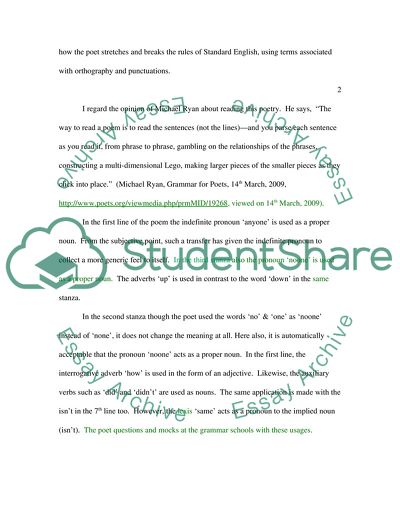Cite this document
(Anyone Lived in a Pretty How Town by Edward Estlin Cummings Essay, n.d.)
Anyone Lived in a Pretty How Town by Edward Estlin Cummings Essay. Retrieved from https://studentshare.org/creative-writing/1721377-grammar-and-lexis
Anyone Lived in a Pretty How Town by Edward Estlin Cummings Essay. Retrieved from https://studentshare.org/creative-writing/1721377-grammar-and-lexis
(Anyone Lived in a Pretty How Town by Edward Estlin Cummings Essay)
Anyone Lived in a Pretty How Town by Edward Estlin Cummings Essay. https://studentshare.org/creative-writing/1721377-grammar-and-lexis.
Anyone Lived in a Pretty How Town by Edward Estlin Cummings Essay. https://studentshare.org/creative-writing/1721377-grammar-and-lexis.
“Anyone Lived in a Pretty How Town by Edward Estlin Cummings Essay”. https://studentshare.org/creative-writing/1721377-grammar-and-lexis.


